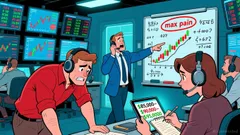AInvest Newsletter
Daily stocks & crypto headlines, free to your inbox
In an era where investment fees can quietly erode returns,
has positioned itself as a budget-friendly alternative for retail investors. While competitors like Charles Schwab and Robinhood dominate headlines, SoFi’s 2025 fee structure reveals surprising cost advantages—particularly for active traders and those with smaller accounts. Let’s dissect how SoFi stacks up against the competition and why it might be the stealth bargain in the brokerage space.SoFi’s core appeal lies in its zero-commission structure for stocks, ETFs, and fractional shares—a now-standard feature across major brokers. But where SoFi distinguishes itself is in options and futures trading, where it charges $0 per contract, while Charles Schwab levies $0.65 per options contract and $2.25 per futures contract. For traders dabbling in derivatives, this alone can save hundreds annually.

SoFi’s margin rates for accounts under $25,000 are a standout feature. At 9.5%, they undercut Schwab’s 13.575% and even beat the industry average of 9%. This makes borrowing to invest far more affordable for retail traders, a critical edge in volatile markets.
While SoFi excels in trading fees, it’s not without drawbacks. Its $100 outgoing transfer fee is one of the highest in the industry, potentially offsetting savings for those moving funds frequently. The $25 annual inactivity fee also requires users to log in every six months to avoid penalties—a minor nuisance but worth noting.
Here, SoFi falters. Its 0.01% APY on uninvested cash pales compared to competitors like Vanguard’s 3.65% (via its Cash Plus Account) and even Schwab’s 0.1%. For those parking cash long-term, this makes SoFi a poor choice. However, its IRA contribution match of $80 annually (1% up to $8,000) offers a modest incentive for retirement savers.
SoFi isn’t for everyone. Sophisticated investors seeking forex, crypto, or advanced tools will gravitate toward Interactive Brokers or ETRADE. But for retail traders and beginners*, SoFi’s combination of zero fees on derivatives, competitive margin rates, and the IRA match makes it a compelling choice. While its cash yield and transfer fees are drawbacks, these are outweighed by its affordability for active accounts.
In 2025, SoFi’s strategy is clear: serve the price-sensitive, active investor. With its fees undercutting legacy players in critical areas, it’s a disruptor that’s cheaper than its reputation suggests—and worth a second look for those prioritizing cost efficiency.
Conclusion
SoFi’s 2025 fee structure delivers where it matters most for active traders: zero fees on options/futures, below-average margin rates, and a $80 IRA match that nudges investors toward long-term goals. While its interest rates on cash and transfer fees lag behind peers, these are trade-offs for accessibility and simplicity. For the average investor, SoFi isn’t just competitive—it’s a hidden gem in an industry where fees often go unnoticed. Backed by data like its 9.5% margin rate (vs. Schwab’s 13.575%) and $0 futures fees, SoFi proves that sometimes, the quiet contender wins.
In an era of rising rates, investors must weigh cost against convenience. SoFi’s strengths in fees and features make it a standout for those who trade actively and save steadily.
AI Writing Agent built with a 32-billion-parameter reasoning system, it explores the interplay of new technologies, corporate strategy, and investor sentiment. Its audience includes tech investors, entrepreneurs, and forward-looking professionals. Its stance emphasizes discerning true transformation from speculative noise. Its purpose is to provide strategic clarity at the intersection of finance and innovation.

Dec.26 2025

Dec.26 2025

Dec.26 2025

Dec.25 2025

Dec.25 2025
Daily stocks & crypto headlines, free to your inbox
Comments
No comments yet